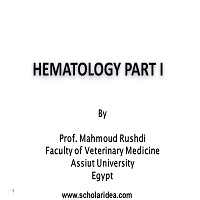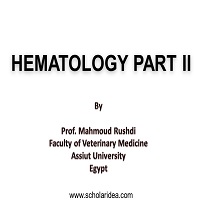Anticoagulants are chemical substances that can prevent blood coagulation. they are considered as chemical preservative for whole blood sample, as it preserve the blood in a state similar to that find inside the body.
There are different types of anticoagulants, as Ethylene Diamine Tetraacetic Acid (EDTA), Heparin, Sodium citrate, Potassium and ammonium oxalate mixture and sodium fluoride.
The type of anticoagulant is determined according to the requested blood analysis. EDTA is the best anticoagulant for hematological analysis. Heparin is used for blood gas analysis. Sodium citrate is the anticoagulant of choice for blood transfusion, for erythrocytic sedimentation rate (ESR) and for prothrombin time. Sodium fluoride is used for measuring blood glucose level.
Anticoagulant must be used in proper concentration and amount, For example EDTA is used in a concentration of 1 mg/ml blood, higher amount than required results in shrinkage of RBCs. smaller RBCS will result in decrease PCV and MCV. The problem of adjusting the concentration of the anticoagulants is overcame by using ready to use vacutainer tubes.
EDTA has the least effect on the staining affinity of the leucocytes, being cheap and can preserve blood sample for 24 hrs.
Heparin is present naturally inside the body, the advantage that makes it suitable for blood gas analysis, but has the disadvantage of being expensive and cause bluish leucocytes in stained blood film.
Sodium citrate has the advantage of being easily metabolized and non toxic, which make it suitable for blood transfusion.
Sodium fluoride has inhibitory effect on glycolytic enzymes and subsequently it is considered the anticoagulant of choice for measuring glucose level in plasma.
https://www.youtube.com/watch?v=lfxQ-YMV_2






